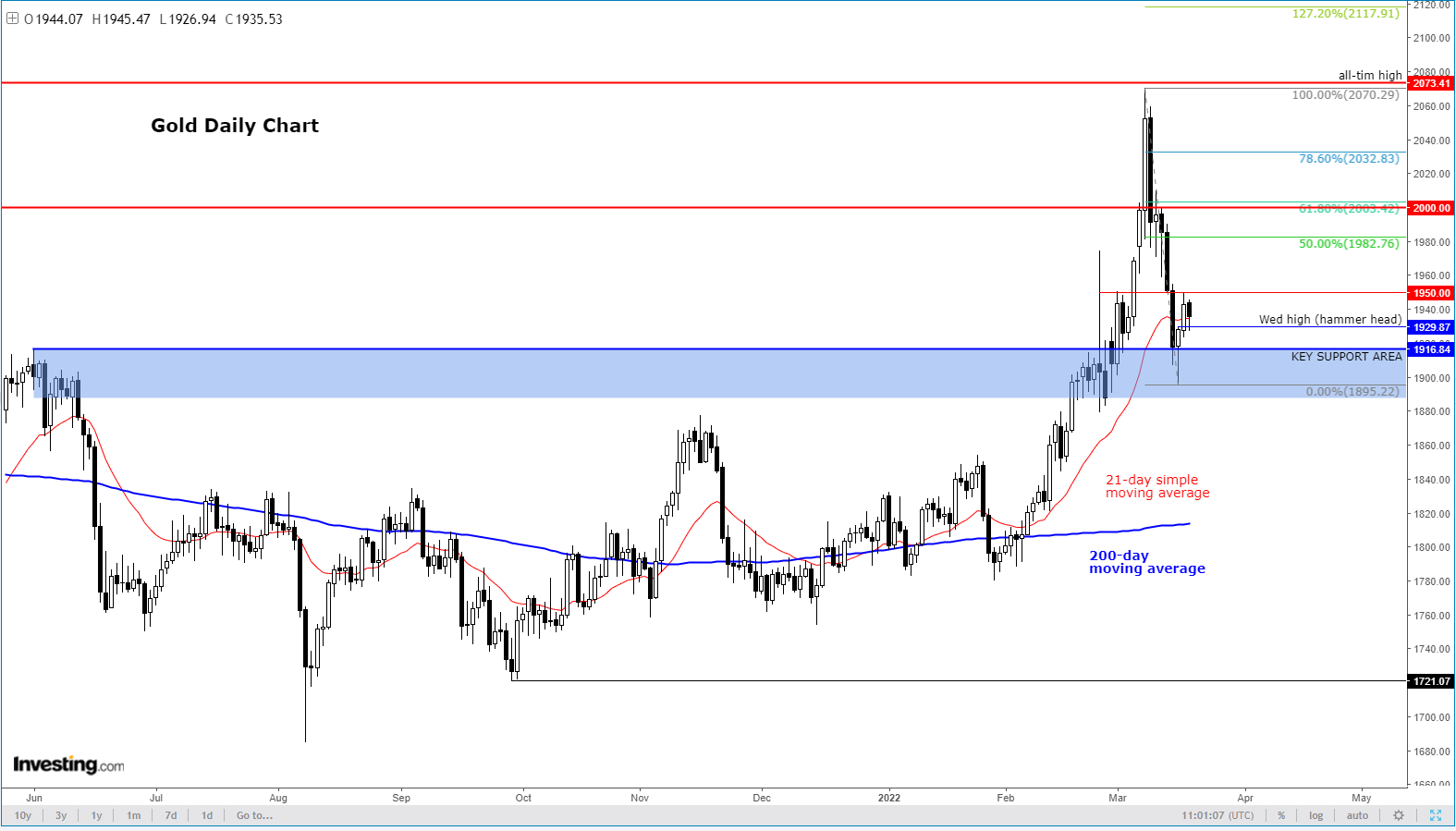This article was written exclusively for Investing.com
Following last week’s slump, gold finally managed to find some support on the back of the Fed’s rate hike on Wednesday, tuning positive intraday. The asset's $50 pop in the subsequent day further displayed the relevance of this development, as the yellow metal rallied to hit resistance at $1,950 before dropping back.
From a bullish point of view, it is disappointing that gold could not break through this hurdle, given everything happening in the world right now. Still, all hopes are not lost. The metal could come back to rally through this resistance level, leading to follow-up technical buying towards $2,000 again and possibly a new all-time high shortly.
However, to have any chance of doing so, it will have to first hold above Wednesday’s hammer candle and now support around $1,929. A daily closing break above of $1,950 would further brighten the technical outlook for gold.

From a macro point of view, the rallying USD/JPY currency pair and the recent comeback in the stock markets (both risk-on signals) are discouraging speculators from buying safe-haven assets such as gold more aggressively.
But the main driver behind gold is soaring inflation, which should continue to provide steady support for the metal’s dips. If the Fed’s hiking cycle doesn’t kill you, it makes you stronger. Furthermore, the fact that gold rose on Wednesday in the face of a hawkish Fed is clearly a good sign for gold.
What’s more, the longer end of the yield curve has flattened following the Fed’s meeting. This suggests that the market thinks the Fed will just front-load rate hikes before loosening its policy again in the not-too-distant future. This view makes some sense.
Inflation is hot now, and it could get scalding in the coming months, given the recent upsurge in key commodity prices. Sustained high inflation levels would hurt consumer spending, causing the economy to weaken. And if the economy weakens to the point that it will require a very dovish policy again, the Fed will act accordingly.
Thus, the longer term nominal yields could remain suppressed if inflation accelerates further in the short term, keeping long-term real yields deep in the negative territory for a while.
If this scenario plays out, zero-yielding assets like gold and silver should be able to thrive. They will benefit more if stock markets resume lower, which wouldn’t surprise me, given the uncertainty over the Ukraine situation, surging inflationary pressures, and monetary tightening from major central banks.
